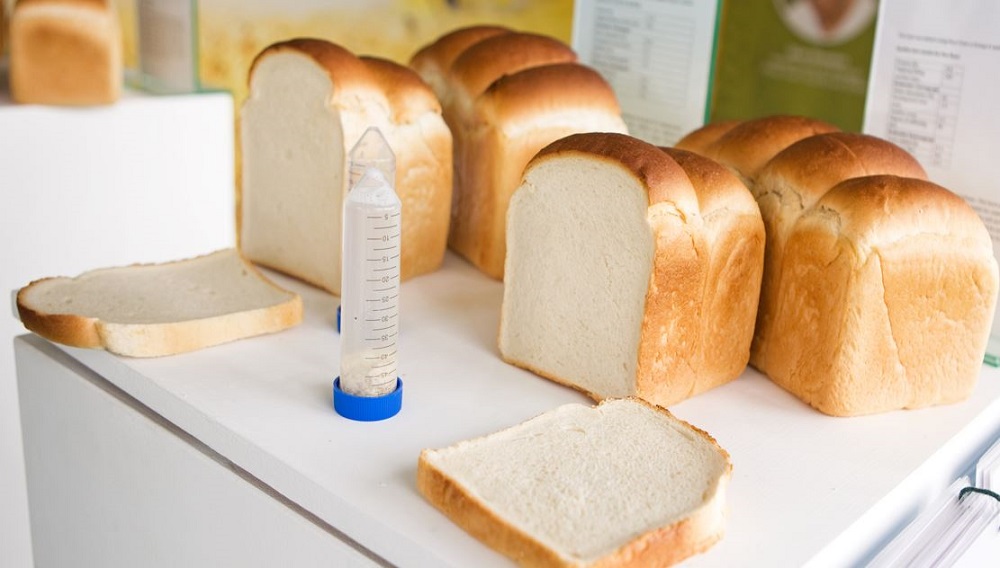Lower nitrogen milling wheat PhD
Friday, 1 July 2022
Imagine a world where you can hit grain protein specifications with nitrogen rates closer to a conventional feed wheat fertiliser regime. Dhan Bhandari, who manages grain quality research at AHDB, looks at a PhD studying the milling wheat varieties of the future.
With nitrogen bills spiralling, many growers want to cut fertiliser rates. However, this is not easy to pull off in high-stakes milling wheat production. Certainly, if a milling wheat variety consistently produced the right amount and right kind of protein at a low nitrogen rate, it would stand out on the Recommended Lists (RL).
Protein puzzles
However, delivering such a variety is a particularly tough nut to crack. As the right quantity and quality of flour protein are paramount, the industry standard is set at 13% grain protein. This ensures that grain delivers the consistent strength needed for bread-making flours.
Lowering this standard value is not straightforward, as it may impact adversely on dough properties. For low nitrogen milling wheat varieties to become a commercial reality, it is essential to tackle complex crop genetics and, critically, understand environmental interactions better.
Based at Rothamsted Research, an AHDB PhD student, Rohan Richard, has nestled himself in a team well-versed in tackling the low nitrogen bread-making wheat challenge.
The studentship commenced in 2019, the same year an intriguing AHDB-funded report was published. Also conducted at Rothamsted Research, the multi-year, multi-site, multi-nitrogen-rate and multi-genotype study (ahdb.org.uk/low-protein-wheat-for-bread-making) identified varieties that deliver good bread-making performance at relatively low rates of nitrogen fertiliser.
Two key factors were at the heart of the good performance. The varieties tended to move nitrogen more efficiently into grain and produced better quality protein – specifically, an increase in the proportions of glutenin in gluten (resulting in greater dough elasticity).
Genetic studies
To further investigate the components of protein quantity and quality, Rohan selected winter wheat populations derived from a cross between two carefully selected contrasting parents:
Malacca (average grain protein content and low protein stability)
Hereward (high grain protein content and high protein stability)
The first population of 90 lines was already associated with a strong genetic map – a resource that can be used to pinpoint areas of the genome associated with any measured trait. He uses replicated field trials, in three environments, and measures grain quality components. The data will help him to develop ‘breeder friendly’ molecular markers to track grain quality genetics through breeding programmes.
The second population comprises near-isogenic lines (NILs). Each line features a limited number of known changes, with the rest of the genetic background the same (across all lines). It provides a powerful way to test the specific effects of ‘good’ and ‘poor’ quality alleles and how they are influenced by the environment. Following a careful analysis of grain processing quality, he has already identified a chromosomal area associated with bread texture. Once again, genetic markers can be used to track stable high-quality alleles during plant breeding.
Concluding later this year, Rohan’s results will move the industry one step closer to the varieties of tomorrow.
Critically, AHDB’s investment also delivers skills to the industry – it’s the primary aim of the PhD studentship programme. In this case, the project will deliver a scientist with a strong understanding of genetic mapping, agronomy, and grain testing techniques.
Visit the grain protein PhD project page
Protein specification future
At the 2022 Milling Wheat Conference, Joe Brennan, from UK Flour Millers (UKFM), provided an interesting perspective on protein, and answered three burning questions often on farmers’ lips:
- Why is protein (quantity and quality) important to millers?
- Why is the typical protein specification set at 13%?
- What is stopping a lower protein specification?
Watch the future of the protein specification for milling wheat presentation
 AHDB
AHDB
Topics:
Sectors:
Tags:

